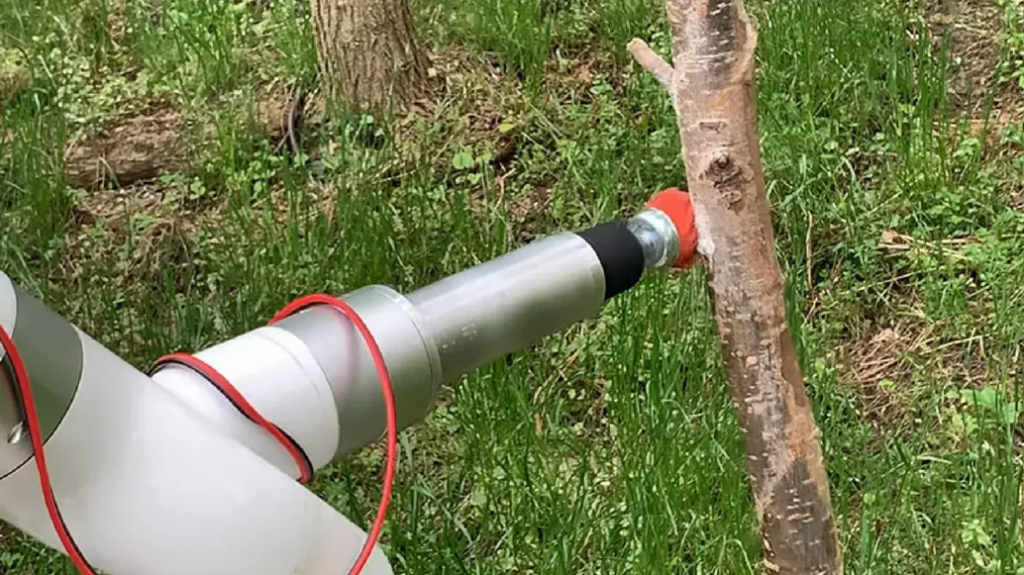The spotted lanternfly, a seemingly harmless insect, has wreaked havoc on crops, causing over $500 million in damages to fruit trees since its accidental introduction to the country almost a decade ago. While the current focus is on introducing wasp species to control the lanternfly population, students at Carnegie Mellon University’s Robotics Institute have devised an innovative alternative—a robot death machine.
Named TartanPest, this remarkable creation employs a combination of cutting-edge technologies and components to autonomously track down and eliminate lanternfly egg masses. The robot utilizes an electric tractor for mobility and a suite of cameras for seamless traversal. It constantly scans its surroundings through computer vision capabilities, diligently searching for egg masses that can contain up to 50 lanternfly eggs. Once located, TartanPest’s robotic arm, equipped with a spinning brush attachment, swiftly eradicates the eggs, effectively scrubbing them away like unwanted debris.
Carolyn Alex, an undergraduate researcher on the TartanPest team, explains the urgency of addressing the spotted lanternfly issue: “Currently, spotted lanternflies are concentrated in the eastern portion of the nation, but they are predicted to spread to the whole country. By investing in this issue now, we will be saving higher costs in the future.”
TartanPest employs advanced deep-learning algorithms that have been trained using a vast dataset of images to accurately identify the egg masses. While the robot operates autonomously, it still requires human intervention to address any technical issues that may arise.
Consequently, TartanPest may not be the most efficient method to eradicate spotted lanternflies. However, its remarkable capabilities and the appeal of a killer robot make it an incredibly fascinating innovation that captures the imagination of many.

